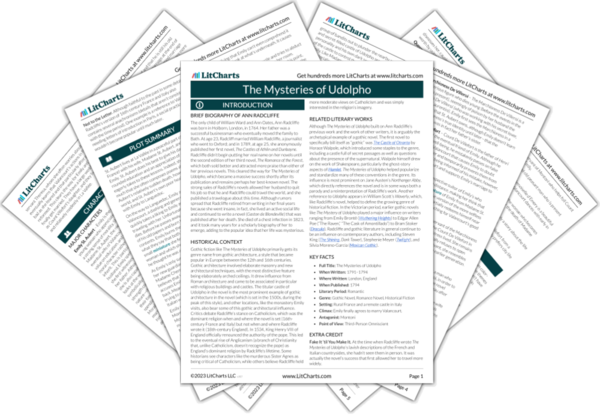As is often the case, bad weather is an omen for something momentous. Thunder may seem to be a dangerous sign—and indeed it is for Emily and the others who nearly wreck their boat in the storm—but ultimately the Count and Countess de Villefort have no reason to fear their new guests, perhaps even allowing for the possibility that the thunderstorm is a kind of natural miracle that brings them together.
